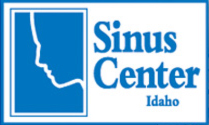An antibiotic is a soluble substance derived from a mold or bacterium that inhibits the growth of other microorganisms.
The first antibiotic was Penicillin, discovered by Alexander Fleming in 1929, but it was not until World War II that the effectiveness of antibiotics was acknowledged, and large-scale fermentation processes were developed for their production.
Acute sinusitis is one of many medical disorders that can be caused by a bacterial infection. However, it is important to remember that colds (viral infections), allergies, and environmental irritants, which are more common than bacterial sinusitis, can also cause sinus problems. Antibiotics are effective only against sinus infections caused by a bacterial infection.
The following symptoms may indicate the presence of a bacterial infection in your sinuses:
- Pain in your cheeks or upper back teeth
- A lot of bright yellow or green drainage from your nose for more than 10 days
- No relief from decongestants, and/or
- Symptoms that get worse instead of better after your cold is gone.
Most patients with a clinical diagnosis of acute sinusitis caused by a bacterial infection improve without antibiotic treatment. Physicians will initially offer appropriate doses of analgesics (pain-relievers), antipyretics (fever reducers), and decongestants. However if symptoms persist, antibiotics may also be added to treat the sinus infection.
Antibiotic Treatment For Sinusitis
Antibiotics are labeled as narrow-spectrum drugs when they work against only a few types of bacteria. On the other hand, broad-spectrum antibiotics are more effective by attacking a wide range of bacteria, but are more likely to promote antibiotic resistance. For that reason, your ear, nose, and throat specialist (ENT) will most likely prescribe narrow-spectrum antibiotics, which often cost less. He/she may recommend broad-spectrum antibiotics for infections that do not respond to treatment with narrow-spectrum drugs.
